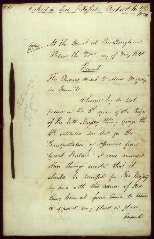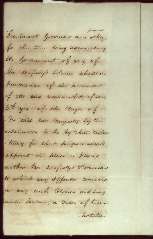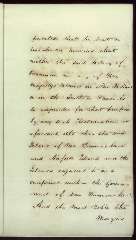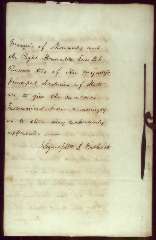

Order-in-Council ending transportation of convicts 22 May 1840 (UK)
Significance
The 1840 Order-in-Council and its aftermath represented the turning point when, 50 years after its foundation, New South Wales ceased to be a penal colony. It was now defined as a free Colony in which the institutions of a free and, ultimately, democratic polity could evolve.
History
In 1784, during Britain's search for alternative sites to its North American colonies for the transportation of convicts, the British Parliament passed an Act empowering the Government to prescribe, by Order-in-Council, any place it considered appropriate for a penal colony. After much discussion, an Order-in-Council was made on 6 December 1786, appointing 'the eastern coast of New South Wales or some or other of the islands adjacent' as a place for transportation. Convicts were sent there from 1788.The policy of transportation was the subject of much inquiry and debate over the decades. In 1837, a British parliamentary committee headed by Sir William Molesworth recommended ending transportation to New South Wales.
On 22 May 1840 this Order-in-Council was issued, removing New South Wales from the list of places to which convicts could be sent. (Van Diemen's Land continued to receive convicts, and transportation to Western Australia began in 1850.)
In 1848, there was an attempt to re-introduce a limited form of transportation to New South Wales, but local opposition was so intense the plan was abandoned and this Order-in-Council was not revoked. Secretary of State, Earl Grey wrote to Governor Fitzroy on 18 November 1849 advising him that no more convicts would be sent to the Colony.
Description
| Long Title: | Order-in-Council ending transportation to New South Wales, 22 May 1840 |
| No. of pages: | 16 |
| Medium: | Paper |
| Measurements: | 20 x 31.5 cm |
| Provenance: | British Government |
| Features: | Bound on the left side by a dark green silk ribbon threaded through the pages |
| Location & Copyright: | State Records New South Wales |
| Reference: | SRNSW: 4/1310 |





